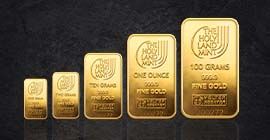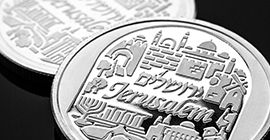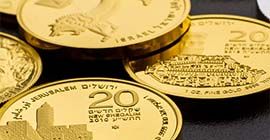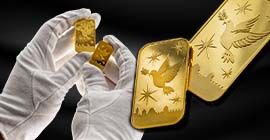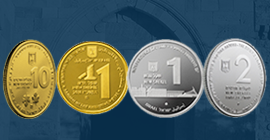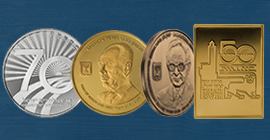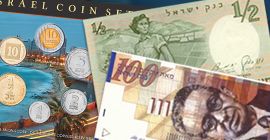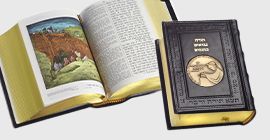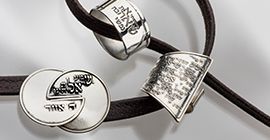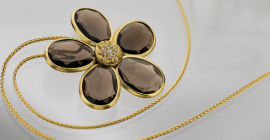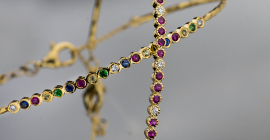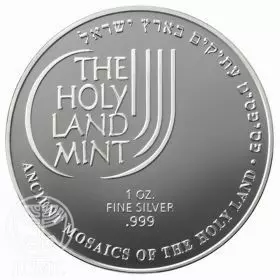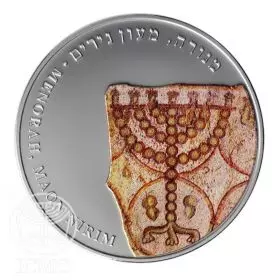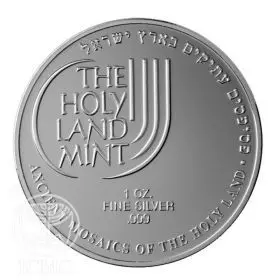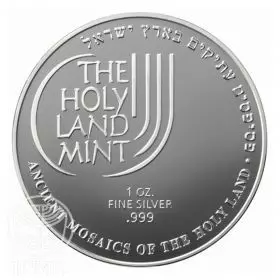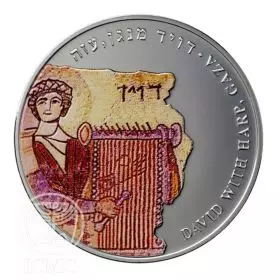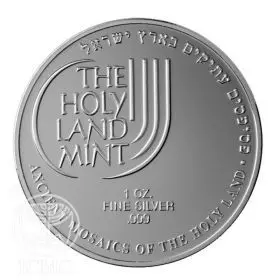Lion
Silver 999, 38.7 mm, 1 oz.
SKU
21872390
In stock
$209.00
Specifications
| Issuing Year | 2013 |
|---|---|
| Material | Silver |
| Fineness | 999 |
| Weight | 1 oz. |
| Diameter | 38.7 mm |
| Max Mintage | 888 |
| Design | Meir Eshel |
"LION" MOSAIC FROM BE'ER SHEMA
5TH MEDAL IN THE "ANCIENT MOSAICS IN THE HOLY LAND" SERIES
Horvat Be'er Shema is a site of ancient ruins in the western part of the northern Negev. In historical sources, the site is first mentioned in the Roman Age (2nd century), as Birasma and archeological excavations carried out in 1989-1990 and in 2006 have proved that the site was important in the Byzantine period. A few remains dating from the first Islamic and Mamluk periods have also been found, in addition to remnants of agricultural activity in later times.
Be'er Shema is located on the ancient Spice Route, which was a main transportation and trade artery, joining Petra to Gaza. In Petra, across the Jordan River, merchandise from the Arabian Peninsula and Asia was received. From there, it was sent to the north and west, to the Mediterranean Coast and, from there, out by sea to the markets of Europe and North Africa. This routeway also served Christian pilgrims, travelling to the Sinai Peninsular. The strategic importance of the site lay in its situation on the "limes Palaestinae", the Roman defense layout, a security belt along the southern border.
In the Byzantine period, as a result of Missionary activity and the authorities, Christian influence and culture spread in the Land of Israel. At the same time, according to research, there were well-established Jewish settlements, and likewise Nabatean settlements and nomadic activity, in the western and northern Negev regions. As the years of Byzantine rule went by, the latter populations lost their individual character. Many churches were built in the Land of Israel, mostly in the second half of the Byzantine period (5th and 6th centuries), and in this particular region. Archeological research has revealed a few of the churches in this area, including the church at Be'er Shema.
The architectural style of the Byzantine Church at Be'er Shema is similar to that of churches of the present time: a lengthwise construction with columns supporting a basilica-style roof and high prayer hall with apse.
In buildings of this nature, floor mosaics have been found, but the mosaic at Be'er Shema is spectacular. In the middle of the center hall of the church, this beautiful mosaic features a vine flowing out of an amphora, with 55 loops depicting animals, objects and people. The amphora is flanked by lions facing the center. The artist skillfully emphasized the lion's body by means of the different colored stones at his disposal; its thick mane, ribs, large paws and long tail appear very clearly. Within the building are other floor mosaics with 10 dedicatory inscriptions in Greek. One of them is dedicated to St. Stephen, who was the first Christian to be stoned to death for his beliefs and, for this reason, was regarded as the first Christian martyr.
The church was deserted in the second half of the 7th century, when Islamic rule took over from the Christians.
Photography of the Mosaic: Yeshayahu Lander, courtesy the Israel Antiquities Authority.
Reverse: Inscription "Ancient Mosaics of the Holy Land" in Hebrew and English, the metal weight and fineness and the Holy Land Mint Logo (the international logo of ICMC).
Edge: Smooth with serial number.
Designer: Meir Eshel.
Engraving: USA
Mint: USA
Issue Name: Ancient Mosaics, Lion
Series Name: Holy Land Ancient Mosaics
| Catalog SKU | Condition | Diameter | Issue Price | Issuing Year | Material | Quantity | Weight |
|---|---|---|---|---|---|---|---|
| 31872390 | 38.7 mm | Unavailable Info | 2014 | Gold 9999 | 360 | 1 oz. | |
| 21872390 | 38.7 mm | 546 NIS | 2013 | Silver 999 | 888 | 1 oz. |

